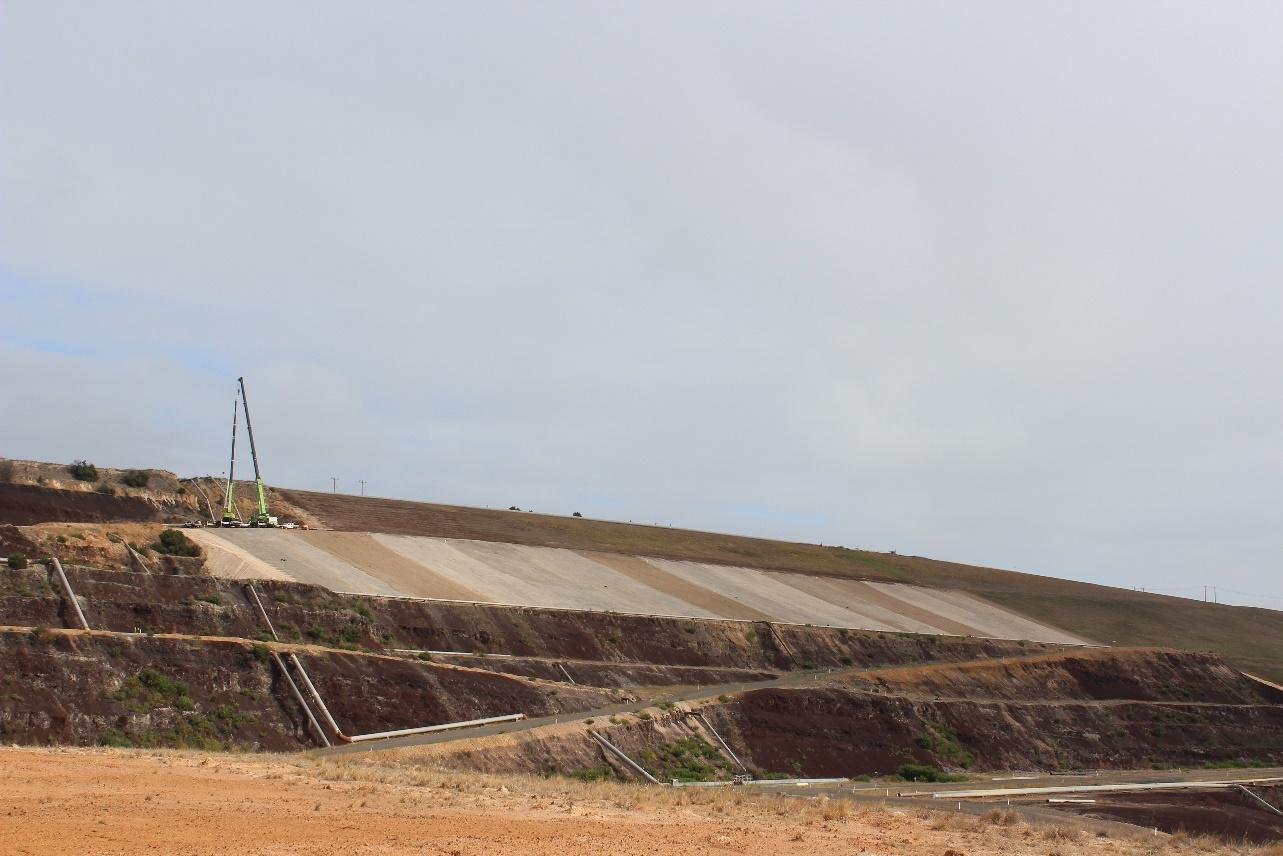
4 minute read
2. Background
On 9 February 2014 a fire began in the Hazelwood coal mine as a result of embers spotting from nearby bushfires. The fire burned for 45 days and impacted on local communities within Victoria's Latrobe Valley, particularly in the town of Morwell. Due to its severity and wide-reaching impacts, the Hazelwood mine fire constituted two emergencies – a major complex fire emergency and a serious public health emergency. Coal mine fires have unique properties that differentiate them from bushfires. They typically burn slowly over an extended period (normally several weeks) due to the presence of deep seated, compacted fuel, unlike bushfires which burn quickly and unpredictably. Firefighters are presented with unique challenges as coal can burn beneath the ground and toxic gases can be present in the pit below ground-level. The Hazelwood mine fire required significant resources to bring under control. It became the largest and longest burning mine fire to occur in the Latrobe Valley.
2.1 Hazelwood mine fire inquiries (2014, 2015–16)
Following the Hazelwood mine fire, the Victorian Government responded with the announcement of the Hazelwood Mine Fire Inquiry (the 2014 Inquiry) in March 2014. The Board of Inquiry was established to inquire into, report on and make recommendations in relation to the origin and circumstances of the fire, the adequacy and effectiveness of fire management measures, the relevant regulatory regime and the response to the fire and related matters. In its 2014 report, the Board of Inquiry made a total of 18 recommendations – with 12 directed to the Victorian Government and six to the mine operator, owner and licensee, GDF Suez (now ENGIE). The Board of Inquiry also identified a number of commitments – or planned improvements to emergency management arrangements for similar future events – made by the Victorian Government and GDF Suez in their Inquiry submissions. These commitments were later declared by the Board of Inquiry as affirmations – 40 of which were directed to the Victorian Government and 17 to GDF Suez.
The Victorian Government accepted the recommendations directed to it, responding through its Hazelwood Mine Fire Inquiry Report: Victorian Government Implementation and Monitoring Plan (October 2014).
In 2015 the Victorian Government reopened the Hazelwood Mine Fire Inquiry to focus on human health impacts and mine rehabilitation. The reopened Board of Inquiry produced a report in four volumes, each addressing one of the expanded Terms of Reference: • minimising fire risks at Anglesea coal mine for the 2015–16 summer season – Volume I – Anglesea Mine • investigating whether there has been an increase in deaths following the 2014 Hazelwood mine fire –
Volume II – Investigations into 2009–2014 Deaths (Death Investigation Inquiry report) • measures to improve the health of the Latrobe Valley – Volume III – Health Improvement (Health
Improvement Inquiry report) • rehabilitation options for Latrobe Valley coal mines – Volume IV – Mine Rehabilitation (Mine
Rehabilitation Inquiry report).
In June 2016 the Victorian Government released an updated implementation plan setting out the 246 actions being undertaken to fulfil its commitment to implement the recommendations and affirmations of the 2014 and 2015–16 Inquiry reports. The 2016 Victorian Government Implementation Plan sets out how the recommendations and affirmations are to be implemented and monitored, and is structured under the following themes: • governance and accountability • communications and community engagement • health in the Latrobe Valley • air quality and wellbeing • Latrobe Valley coal mine regulation • Latrobe Valley coal mine rehabilitation bonds • Latrobe Valley Regional Rehabilitation Strategy • emergency management planning, response and recovery. Under each theme there are a number of government actions, a lead organisation with responsibility for implementation of each action, and a due date for completion.
2.2 Role of the Inspector-General for Emergency
Management
IGEM is an independent statutory role working in support of Victoria's emergency management sector. IGEM's objectives under the Emergency Management Act 2013 (the Act) are to: • provide assurance to government and the community about emergency management arrangements in Victoria
• foster continuous improvement of emergency management in Victoria.
IGEM's Hazelwood Mine Fire Inquiry assurance role
Section 64(1)(ca) of the Act establishes that one of IGEM's functions is to, at the request of the Minister for Police and Emergency Services (the minister), monitor and report on the implementation of recommendations arising from reports that relate to IGEM's functions or in relation to the emergency management sector in whole or in part. Implementation monitoring seeks to ensure that the lessons identified from emergencies, including recommendations and agreed actions, are implemented in a sustainable manner to make a lasting difference for Victorian communities.
The Act, as amended by the Emergency Management Legislation Amendment Act 2018, created a new function for IGEM to monitor, review and assess emergency management planning at a system level. This new function came into effect on 25 September 2019. In June 2020 IGEM finalised its ‘Emergency management planning system level assurance plan’ – in consultation with the Emergency Management Planning Reform Inter-departmental Committee – which outlines the assurance approach it will take in relation to emergency management planning at a system level in Victoria.
Rather than creating a new assurance process, IGEM will initially monitor implementation progress of the reforms through its existing Hazelwood Mine Fire Inquiry, Strategic Action Plan, and system-wide review implementation monitoring assurance activities.
IGEM’s Victorian Emergency Management Strategic Action Plan Update #3 2018–21 Progress Report 20192 contains its initial observations on implementation of the emergency management planning reforms. This report provides IGEM’s further observations on implementation of the emergency management planning reforms via the ongoing monitoring of Hazelwood Mine Fire Inquiry Action 225 being led by Emergency Management Victoria.

Rehabilitation works AGL Loy Yang (Source: AGL).
2 Refer to igem.vic.gov.au/reports-and-publications/publications/victorian-emergency-management-strategic-actionplan-update-3



